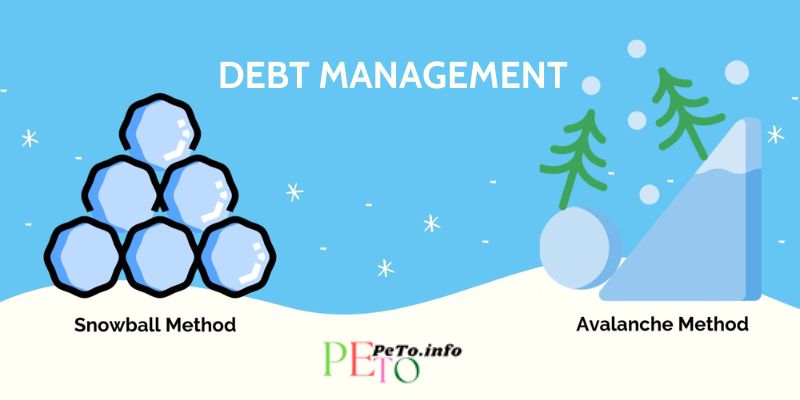Debt is a pervasive reality for many individuals, and managing it effectively requires a well-thought-out financial plan. A robust finance planner for debt management serves as the cornerstone for achieving stability and eventually attaining financial freedom. In this article, Peto will delve into a detailed guide, emphasizing the importance of a structured approach in navigating the complexities of debt.
Contents
- 0.1 Assess Your Current Financial Situation
- 0.2 Create a Budget: The Bedrock of Financial Planning
- 0.3 Emergency Fund: A Shield Against Financial Setbacks
- 0.4 Prioritize High-Interest Debt: Strategic Allocation of Resources
- 0.5 Negotiate Interest Rates: Empowering Financial Conversations
- 0.6 Consolidation and Refinancing: Streamlining Debt Repayment
- 0.7 Snowball or Avalanche Method: Tailoring Your Approach
- 0.8 Increase Income: Broadening Financial Horizons
- 0.9 Seek Professional Advice: Expert Guidance for Personalized Solutions
- 0.10 Monitor Progress: A Dynamic Approach to Financial Planning
- 0.11 Avoid Accumulating More Debt: Building Sustainable Habits
- 0.12 Celebrate Milestones: Motivational Checkpoints
- 0.13 Stay Disciplined: The Key to Long-Term Success
- 0.14 Educate Yourself: Empowering Financial Literacy
- 1 Conclusion
Assess Your Current Financial Situation
The initial step in constructing an effective finance planner for debt management is to assess your current financial situation comprehensively. This involves taking stock of all your debts, ranging from credit cards to loans and any other outstanding balances. Document the interest rates, minimum monthly payments, and total outstanding balances for each debt. This clear snapshot provides the foundation upon which your debt management strategy will be built.
Create a Budget: The Bedrock of Financial Planning
A meticulous budget is the bedrock of any effective finance planner for debt management. Develop a detailed monthly budget that encompasses all sources of income and outlines every expense. Distinguish between essential expenses, such as rent and groceries, and non-essential expenses, including entertainment and dining out. By doing so, you gain a clearer understanding of your financial inflows and outflows, paving the way for informed decision-making.
Emergency Fund: A Shield Against Financial Setbacks
While managing debt is crucial, it’s equally important to build a financial buffer in the form of an emergency fund. This fund acts as a shield against unexpected expenses, preventing you from adding more debt when unforeseen costs arise. Aim to save at least three to six months’ worth of living expenses in your emergency fund.
Prioritize High-Interest Debt: Strategic Allocation of Resources
In the realm of debt management, not all debts are created equal. Prioritize paying off high-interest debts first, as they accrue the most significant financial burden over time. Allocate extra funds to the debt with the highest interest rate while maintaining minimum payments on other debts. This strategic allocation of resources accelerates your journey toward financial freedom.
Negotiate Interest Rates: Empowering Financial Conversations
Take an active role in your financial well-being by initiating conversations with your creditors. Negotiate lower interest rates, as this can translate into substantial savings over the life of your debts. Creditors may be willing to work with you, especially if you have a history of timely payments.
Consolidation and Refinancing: Streamlining Debt Repayment
Exploring options for debt consolidation or refinancing is a pivotal aspect of any finance planner for debt management. Consolidating high-interest debts or refinancing loans to secure lower interest rates can simplify your repayment strategy. This not only makes it easier to track your financial obligations but also reduces the overall cost of debt.
Snowball or Avalanche Method: Tailoring Your Approach
Two popular methods for debt repayment are the snowball and avalanche methods. In the snowball method, you pay off the smallest debts first, providing a psychological boost as you witness tangible progress. The avalanche method, on the other hand, involves tackling the debts with the highest interest rates first, leading to long-term savings. Tailor your approach based on your financial personality and goals.
Increase Income: Broadening Financial Horizons
A finance planner for debt management isn’t solely about expense reduction; it also involves expanding your financial horizons. Look for opportunities to increase your income, such as taking on a part-time job, freelancing, or selling unused items. The additional income can be directed towards debt repayment, accelerating your progress.
Seek Professional Advice: Expert Guidance for Personalized Solutions
Sometimes, navigating the intricacies of debt management requires expert guidance. Consult with a financial advisor or credit counselor to receive personalized advice tailored to your unique financial circumstances. These professionals can provide insights, strategies, and resources to optimize your debt management plan.
Monitor Progress: A Dynamic Approach to Financial Planning
A finance planner for debt management isn’t a static document; it’s a dynamic tool that requires regular monitoring and adjustments. Review your budget and debt repayment plan regularly, making necessary tweaks based on changes in income or expenses. This proactive approach ensures that your plan remains aligned with your financial goals.
Avoid Accumulating More Debt: Building Sustainable Habits
While actively working on reducing existing debt, it’s crucial to develop sustainable financial habits that prevent the accumulation of new debt. Consider using cash or debit instead of credit cards for daily expenses. Cultivating responsible financial behavior is essential for long-term success in debt management.
Celebrate Milestones: Motivational Checkpoints
Embarking on a journey to debt freedom is a significant undertaking. Celebrate small victories along the way as motivational checkpoints. Whether it’s paying off a credit card or reaching a specific debt reduction milestone, acknowledging your progress reinforces positive financial habits and keeps you motivated.
Stay Disciplined: The Key to Long-Term Success
Discipline is the linchpin of successful debt management. Stick to your budget and debt repayment plan consistently, even when faced with challenges. A disciplined approach ensures that you stay on course, weathering financial storms and making steady progress towards your ultimate goal of financial freedom.
Educate Yourself: Empowering Financial Literacy
Continuous education is a powerful tool in your debt management arsenal. Stay informed about personal finance and debt management strategies. Understanding financial principles empowers you to make informed decisions, fostering a sense of control over your financial future.
Conclusion
A finance planner for debt management is not just a document; it’s a roadmap to financial freedom. By assessing your current financial situation, creating a budget, prioritizing high-interest debt, and incorporating strategic elements like negotiation and consolidation, you pave the way for a debt-free future. Stay disciplined, celebrate milestones, and continuously educate yourself—these are the pillars of a successful debt management journey. Remember, with a well-crafted plan and commitment, financial freedom is within reach.
Conclusion: So above is the Crafting a Comprehensive Finance Planner for Debt Management: A Strategic Guide to Financial Freedom article. Hopefully with this article you can help you in life, always follow and read our good articles on the website: Peto.info
Related Articles
-
Quicken: The Pinnacle of Home Finance Planner SoftwareDecember 2, 2023







